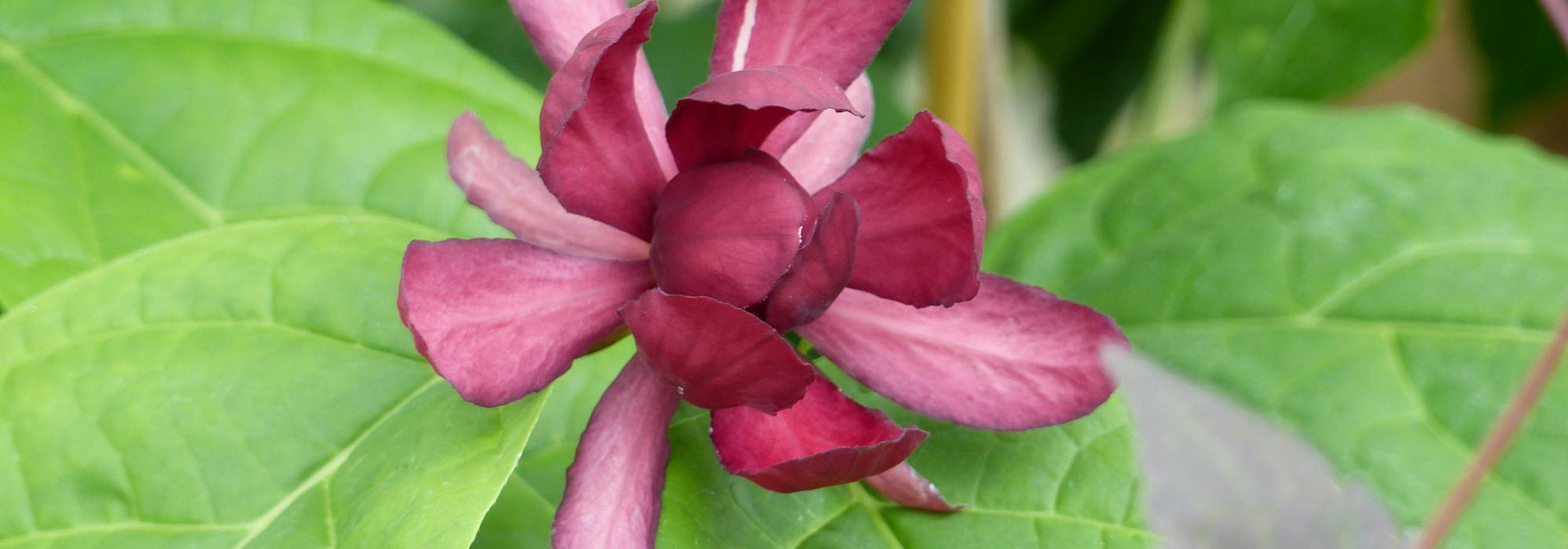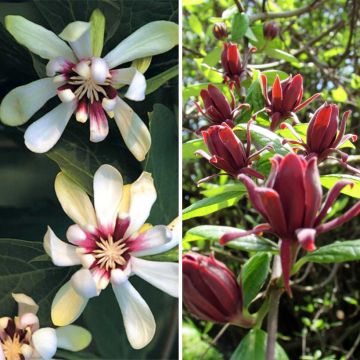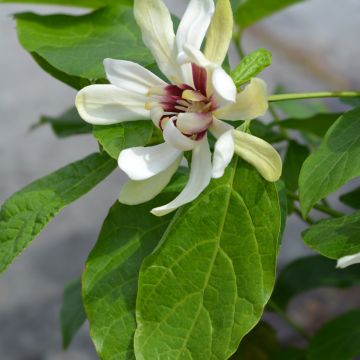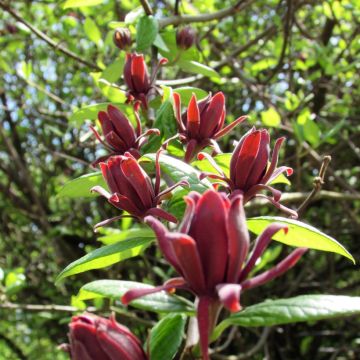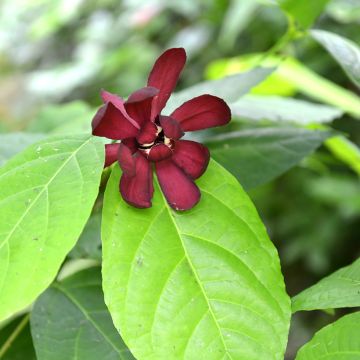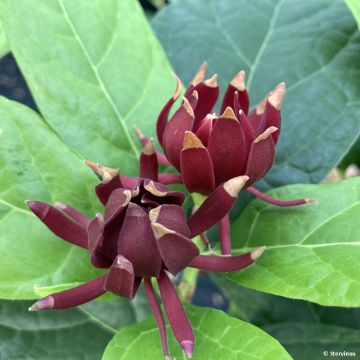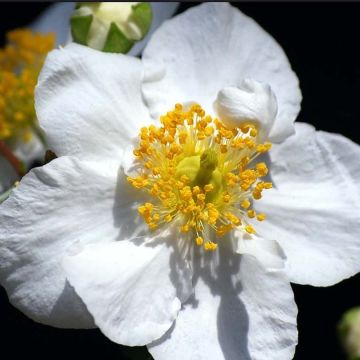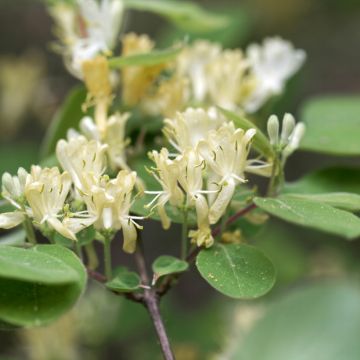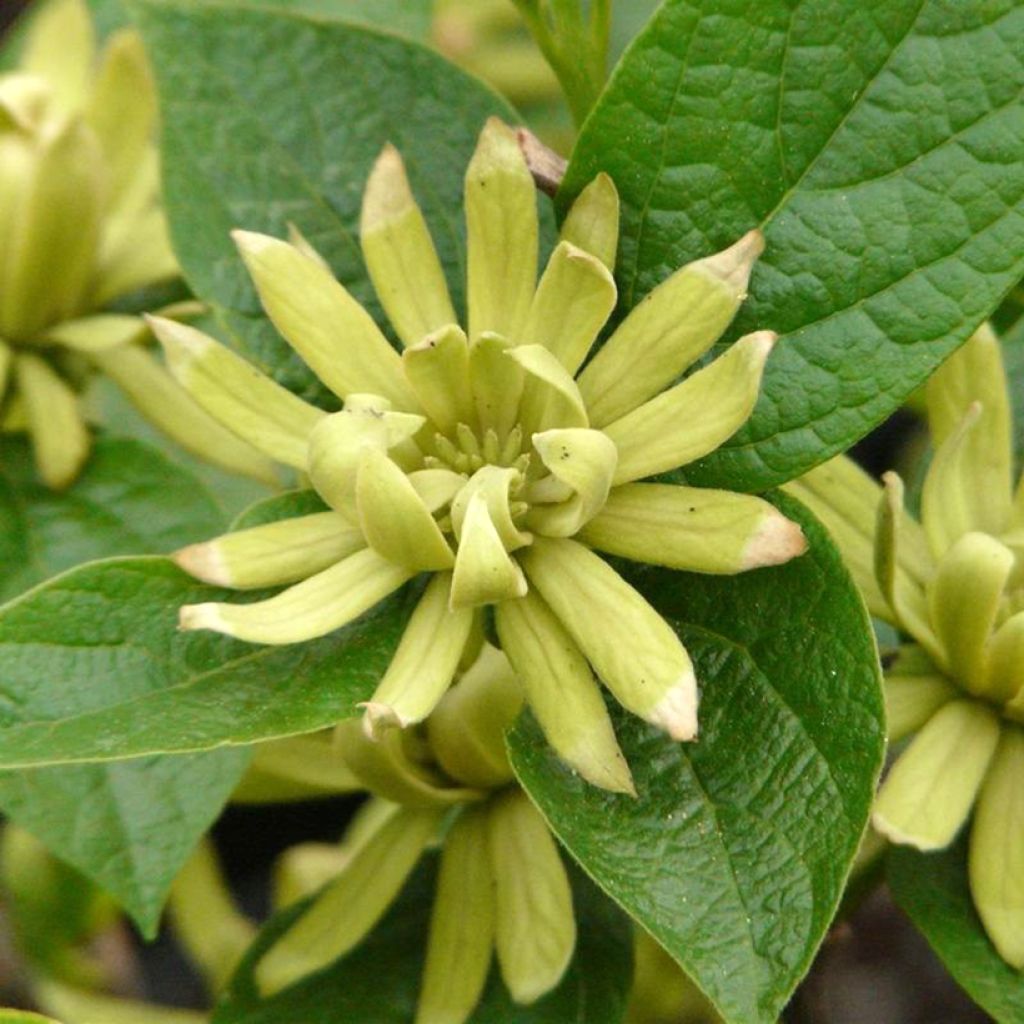

Calycanthus floridus Athens - Sweetshrub
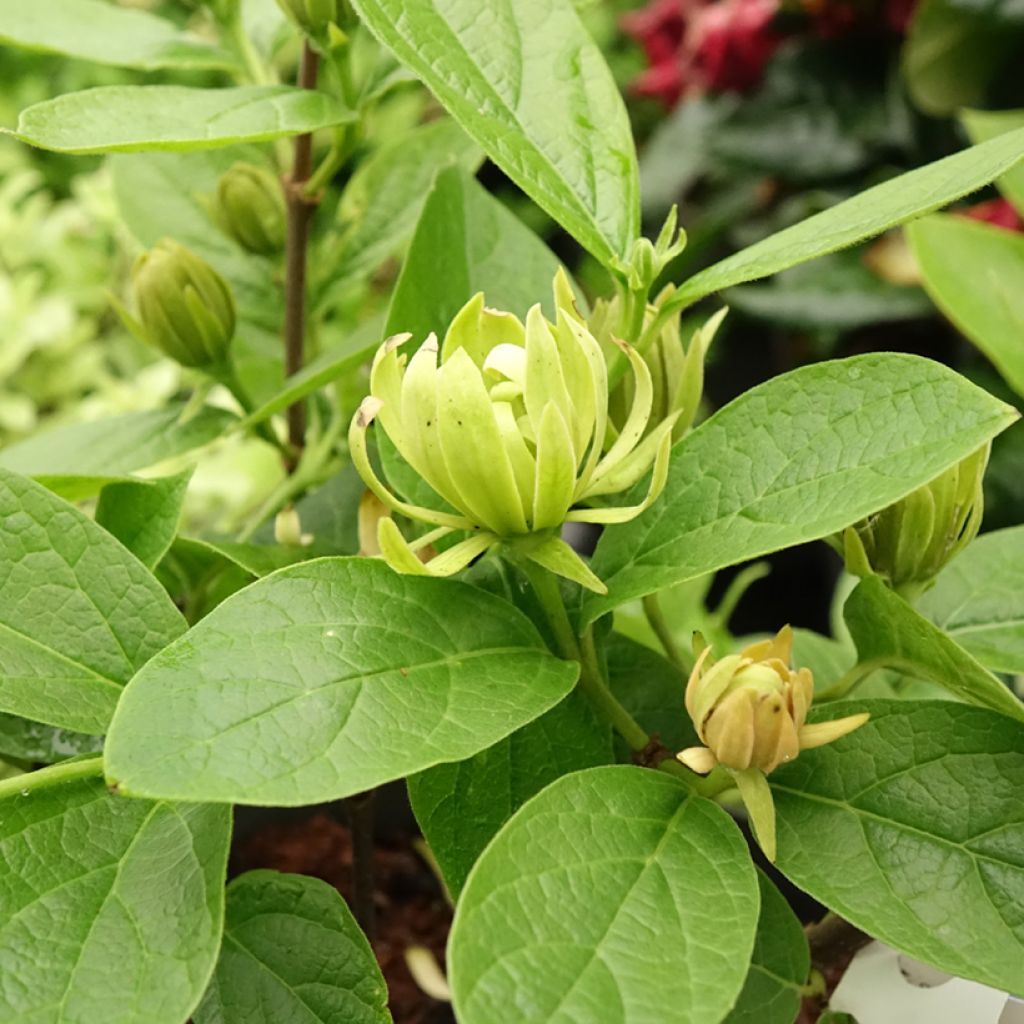

Calycanthus floridus Athens - Sweetshrub
Calycanthus floridus Athens - Sweetshrub
Calycanthus floridus Athens
Special offer!
Receive a €20 voucher for any order over €90 (excluding delivery costs, credit notes, and plastic-free options)!
1- Add your favorite plants to your cart.
2- Once you have reached €90, confirm your order (you can even choose the delivery date!).
3- As soon as your order is shipped, you will receive an email containing your voucher code, valid for 3 months (90 days).
Your voucher is unique and can only be used once, for any order with a minimum value of €20, excluding delivery costs.
Can be combined with other current offers, non-divisible and non-refundable.
Home or relay delivery (depending on size and destination)
Schedule delivery date,
and select date in basket
This plant carries a 24 months recovery warranty
More information
We guarantee the quality of our plants for a full growing cycle, and will replace at our expense any plant that fails to recover under normal climatic and planting conditions.
Would this plant suit my garden?
Set up your Plantfit profile →
Description
The Calycanthus floridus 'Athens' is an American hybrid variety of the Sweetshrub that displays an unusual flower colour. In late spring and early summer, the fruity-scented flowers, pale yellow to yellow-green, are borne at the end of short branches. This deciduous shrub, of medium size and graceful habit, makes a lovely specimen in a small garden or in a loose hedge. Hardy, it thrives in a cool, deep, well-drained, rich, and non-limestone soil.
The Calycanthus floridus 'Athens' is a deciduous shrub of the Calycanthaceae family. The botanical species, with green foliage, is native to the east coast of the United States and was introduced to Europe in 1806. The 'Athens' cultivar has a very loose bushy habit and will reach a mature height and spread, typically 2.50 m in all directions, at the age of 5–6 years. Its slightly stiff branches bear leaves that are 7 to 13 cm long, ovate and slightly velvety, shiny on the upper side, lighter on the underside. They turn yellow, amber, and orange in autumn before falling. Flowering occurs in May-June. The original cup-shaped flowers have wide corollas, buttery yellow with a slight greenish tinge, lanceolate petaloid sepals, distinct, arranged in spirals. The fragrance of the flowers evokes strawberries, mangoes, and pineapples, with a spicy note. The fruits resemble small elongated hazelnuts and are contained in curious small brown, velvety pouches. The seeds are toxic and should be kept away from children and animals.
The 'Athens' Sweetshrub can be used either as a solitary specimen, in a loose and natural hedge, or in a large mixed border with perennials and other small shrubs. It is ideal near a pathway or close to a terrace to fully enjoy its fragrance and the beauty of its flowers. To create a harmonious ensemble, you can pair it with variegated dogwoods like 'Elegantissima', tree peonies, the pheasant berry, a golden ninebark, or a Neillia affinis.
The Calycanthus are also known as "Anemone Trees" due to the shape and size of their flowers, which resemble those of these lovely shade perennials. But the fragrance is quite different, reminiscent of strawberries, hence the English name "Strawbush".
Calycanthus floridus Athens - Sweetshrub in pictures
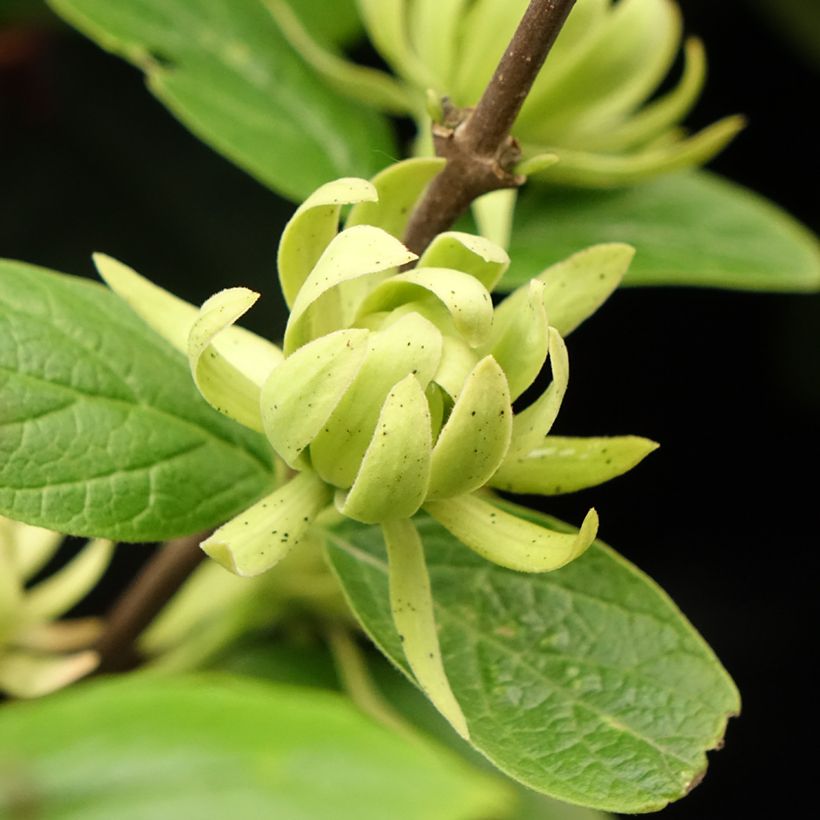

Plant habit
Flowering
Foliage
Botanical data
Calycanthus
floridus
Athens
Calycanthaceae
Cultivar or hybrid
Other Calycanthus
View all →Planting and care
The Calycanthus floridus 'Athens' tolerates semi-shade conditions fairly well, but thrives much better in full sun. Similarly, it can grow in any type of sufficiently deep and moist soil, but it will flourish in slightly acidic to neutral soil, even low in limestone. Feel free to plant it in your heather soil beds, as it is not afraid of acidity. However, pure ericaceous soil is a bit too poor for it: add compost at the base of this bush and keep the soil moist with mulching. Be sure to remove suckers if you do not want it to spread too much. Pruning should be done in late winter if necessary.
Planting period
Intended location
Care
Planting & care advice
This item has not been reviewed yet - be the first to leave a review about it.
Similar products
Haven't found what you were looking for?
Hardiness is the lowest winter temperature a plant can endure without suffering serious damage or even dying. However, hardiness is affected by location (a sheltered area, such as a patio), protection (winter cover) and soil type (hardiness is improved by well-drained soil).

Photo Sharing Terms & Conditions
In order to encourage gardeners to interact and share their experiences, Promesse de fleurs offers various media enabling content to be uploaded onto its Site - in particular via the ‘Photo sharing’ module.
The User agrees to refrain from:
- Posting any content that is illegal, prejudicial, insulting, racist, inciteful to hatred, revisionist, contrary to public decency, that infringes on privacy or on the privacy rights of third parties, in particular the publicity rights of persons and goods, intellectual property rights, or the right to privacy.
- Submitting content on behalf of a third party;
- Impersonate the identity of a third party and/or publish any personal information about a third party;
In general, the User undertakes to refrain from any unethical behaviour.
All Content (in particular text, comments, files, images, photos, videos, creative works, etc.), which may be subject to property or intellectual property rights, image or other private rights, shall remain the property of the User, subject to the limited rights granted by the terms of the licence granted by Promesse de fleurs as stated below. Users are at liberty to publish or not to publish such Content on the Site, notably via the ‘Photo Sharing’ facility, and accept that this Content shall be made public and freely accessible, notably on the Internet.
Users further acknowledge, undertake to have ,and guarantee that they hold all necessary rights and permissions to publish such material on the Site, in particular with regard to the legislation in force pertaining to any privacy, property, intellectual property, image, or contractual rights, or rights of any other nature. By publishing such Content on the Site, Users acknowledge accepting full liability as publishers of the Content within the meaning of the law, and grant Promesse de fleurs, free of charge, an inclusive, worldwide licence for the said Content for the entire duration of its publication, including all reproduction, representation, up/downloading, displaying, performing, transmission, and storage rights.
Users also grant permission for their name to be linked to the Content and accept that this link may not always be made available.
By engaging in posting material, Users consent to their Content becoming automatically accessible on the Internet, in particular on other sites and/or blogs and/or web pages of the Promesse de fleurs site, including in particular social pages and the Promesse de fleurs catalogue.
Users may secure the removal of entrusted content free of charge by issuing a simple request via our contact form.
The flowering period indicated on our website applies to countries and regions located in USDA zone 8 (France, the United Kingdom, Ireland, the Netherlands, etc.)
It will vary according to where you live:
- In zones 9 to 10 (Italy, Spain, Greece, etc.), flowering will occur about 2 to 4 weeks earlier.
- In zones 6 to 7 (Germany, Poland, Slovenia, and lower mountainous regions), flowering will be delayed by 2 to 3 weeks.
- In zone 5 (Central Europe, Scandinavia), blooming will be delayed by 3 to 5 weeks.
In temperate climates, pruning of spring-flowering shrubs (forsythia, spireas, etc.) should be done just after flowering.
Pruning of summer-flowering shrubs (Indian Lilac, Perovskia, etc.) can be done in winter or spring.
In cold regions as well as with frost-sensitive plants, avoid pruning too early when severe frosts may still occur.
The planting period indicated on our website applies to countries and regions located in USDA zone 8 (France, United Kingdom, Ireland, Netherlands).
It will vary according to where you live:
- In Mediterranean zones (Marseille, Madrid, Milan, etc.), autumn and winter are the best planting periods.
- In continental zones (Strasbourg, Munich, Vienna, etc.), delay planting by 2 to 3 weeks in spring and bring it forward by 2 to 4 weeks in autumn.
- In mountainous regions (the Alps, Pyrenees, Carpathians, etc.), it is best to plant in late spring (May-June) or late summer (August-September).
The harvesting period indicated on our website applies to countries and regions in USDA zone 8 (France, England, Ireland, the Netherlands).
In colder areas (Scandinavia, Poland, Austria...) fruit and vegetable harvests are likely to be delayed by 3-4 weeks.
In warmer areas (Italy, Spain, Greece, etc.), harvesting will probably take place earlier, depending on weather conditions.
The sowing periods indicated on our website apply to countries and regions within USDA Zone 8 (France, UK, Ireland, Netherlands).
In colder areas (Scandinavia, Poland, Austria...), delay any outdoor sowing by 3-4 weeks, or sow under glass.
In warmer climes (Italy, Spain, Greece, etc.), bring outdoor sowing forward by a few weeks.






























